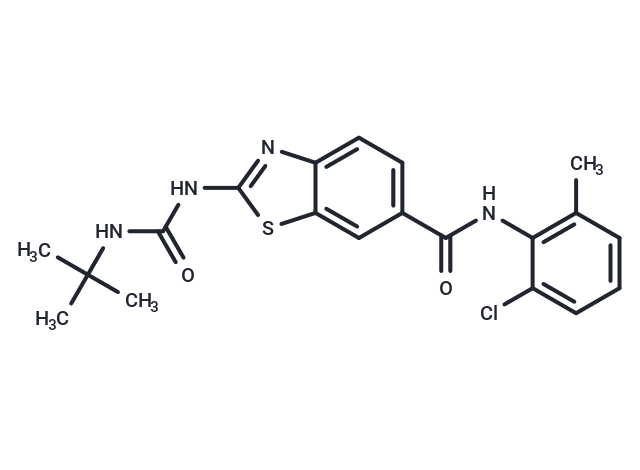Shopping Cart
Remove All Your shopping cart is currently empty
Your shopping cart is currently empty
BMS-243117 is an effective selective LCK inhibitor with good cell activity (IC(50)=1.1 microM) and inhibition of T cell proliferation, which has great potential for therapeutic immunosuppression and the treatment of diseases such as rheumatoid arthritis and asthma.

| Pack Size | Price | USA Warehouse | Global Warehouse | Quantity |
|---|---|---|---|---|
| 25 mg | $1,520 | 6-8 weeks | 6-8 weeks | |
| 50 mg | $1,980 | 6-8 weeks | 6-8 weeks | |
| 100 mg | $2,500 | 6-8 weeks | 6-8 weeks |
| Description | BMS-243117 is an effective selective LCK inhibitor with good cell activity (IC(50)=1.1 microM) and inhibition of T cell proliferation, which has great potential for therapeutic immunosuppression and the treatment of diseases such as rheumatoid arthritis and asthma. |
| Targets&IC50 | Fyn:32 nM, Lyn:330 nM, Lck:4 nM, Src:158 nM, Hck:960 nM, FGR:60 nM, BLK:84 nM |
| Synonyms | UNII-MBE6KWV0QI, MBE6KWV0QI, CHEMBL67237 |
| Molecular Weight | 416.92 |
| Formula | C20H21ClN4O2S |
| Cas No. | 225521-80-2 |
| Relative Density. | 1.367 g/cm3 |
| Storage | Powder: -20°C for 3 years | In solvent: -80°C for 1 year | Shipping with blue ice/Shipping at ambient temperature. |
| Size | Quantity | Unit Price | Amount | Operation |
|---|

Copyright © 2015-2025 TargetMol Chemicals Inc. All Rights Reserved.